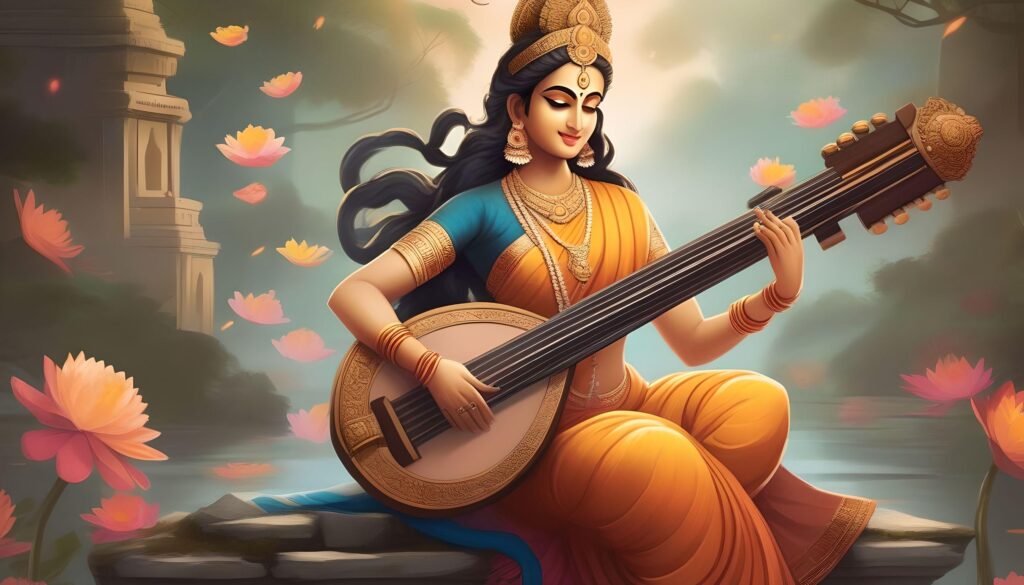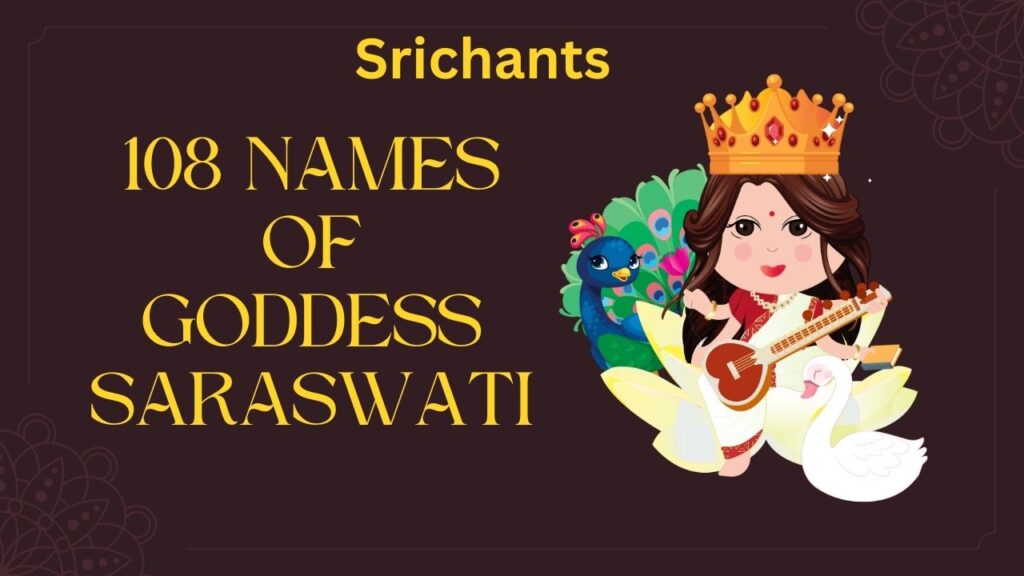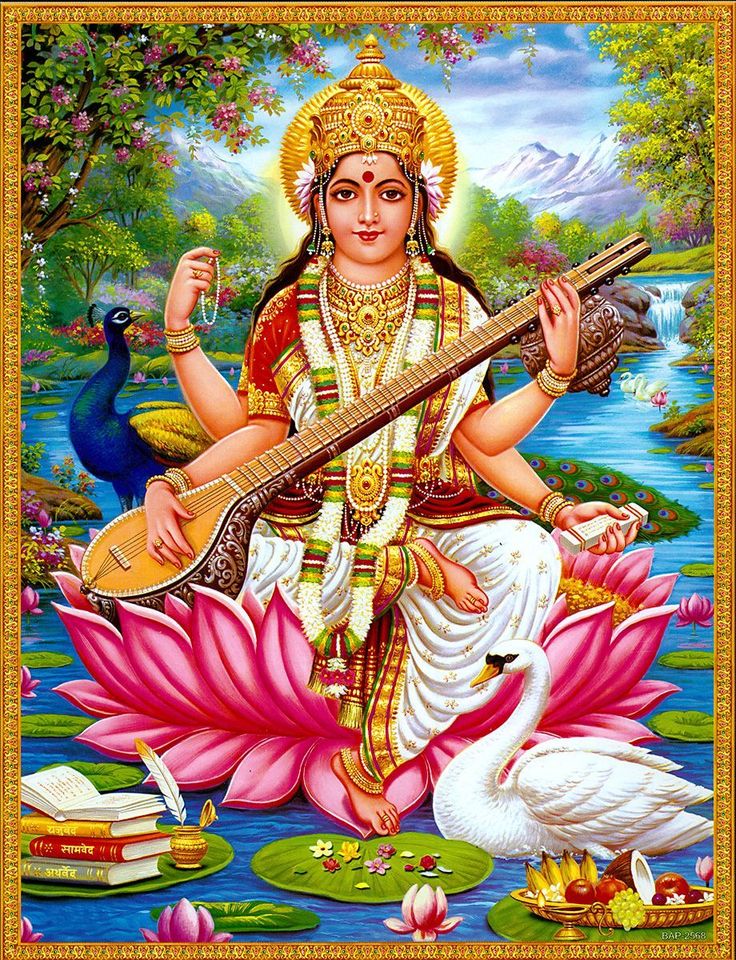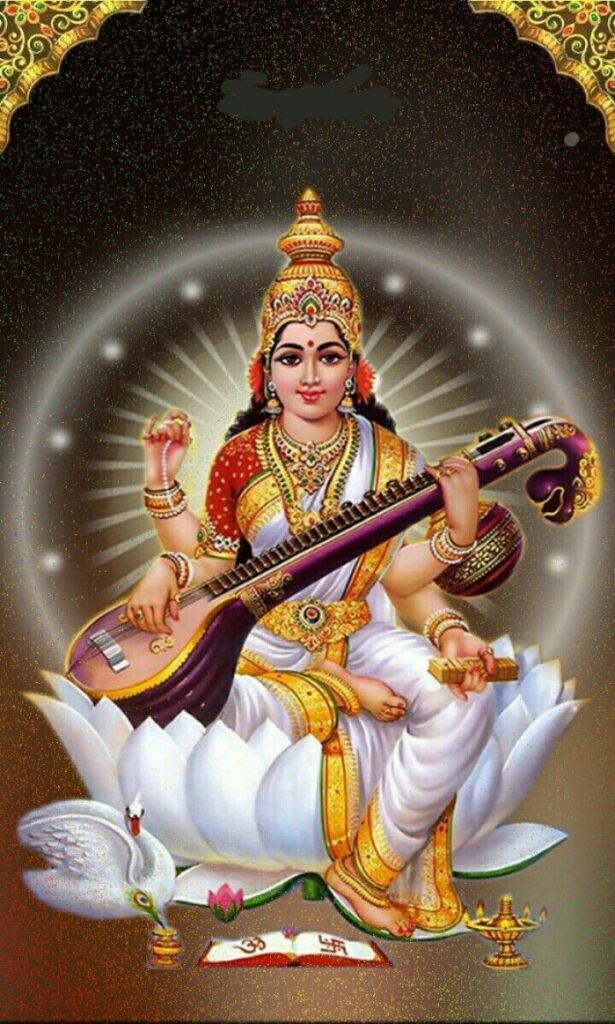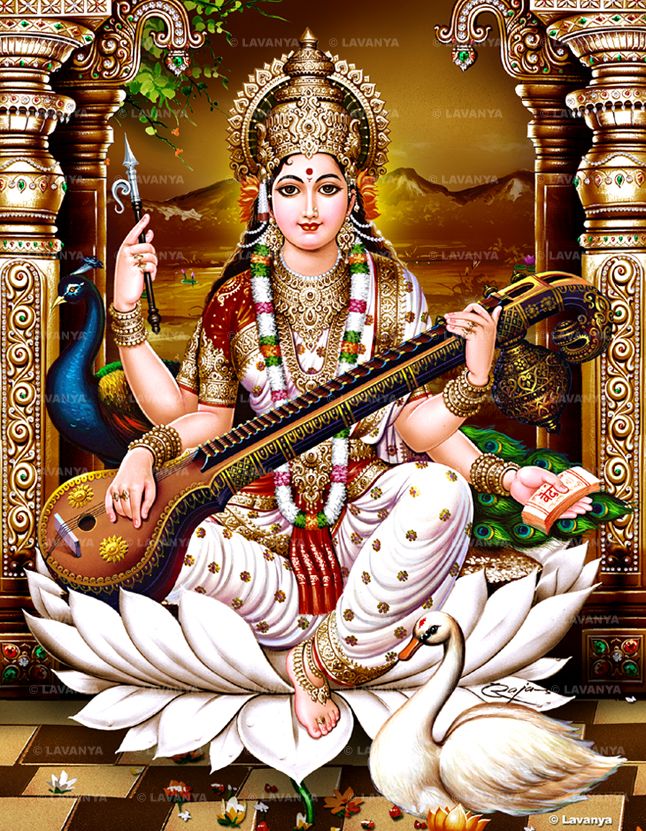Saraswati : Importance of Saraswati in the Hindu’s
Introduction
Within the vast fabric of Hindu mythology, Goddess Saraswati is a lighthouse of intellectual ability, creativity, and illumination. From the fields of education and research to the domains of music and artistic expression, Saraswati’s impact penetrates all aspect of the human experience as the embodiment of knowledge, wisdom, and the arts. Examining Saraswati’s legendary roots, metaphorical interpretations, and great influence on the spiritual and cultural terrain of India, this paper explores her multifarious relevance.
The Development of Goddess Saraswati
Hindu mythology holds that during the creation of the celestial realm, Goddess Saraswati sprung from the very mouth of Lord Brahma, the designer of the earth. Brahma came to see he needed a divine entity to personify the core of knowledge, creativity, and artistic expression as he struggled with the difficult chore of giving his works order and structure. Saraswati was born thus, a living example of the continuous advancement of knowledge and the lighthouse guiding human intellectual and spiritual travel.
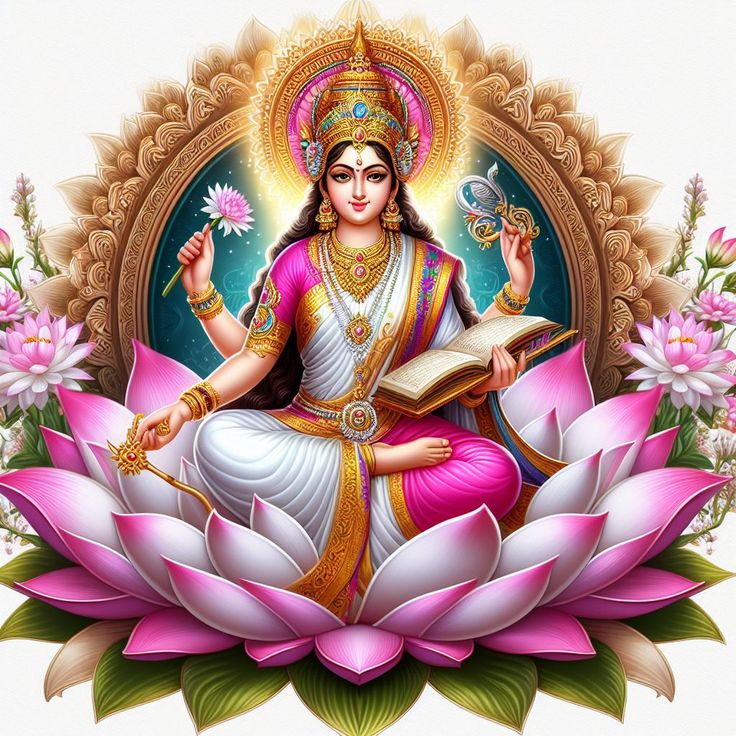
The Symbolic Meaning of Saraswati
Often shown as a lovely, calm figure, Goddess Saraswati is dressed in immaculate white clothing and sits on a lotus bloom. With each piece attesting to her heavenly origin and the attributes she embodies, this symbolic portrayal has great significance.
The importance of White
The white connected with Saraswati is evidence of the nobility and purity of actual knowledge. It denotes the transcending of the earthly world and the achievement of the highest reality, in which wisdom and enlightenment rule most importantly.
Her Lotus Flower
Often found on which Saraswati is portrayed, the lotus blossom represents perfect knowledge and spiritual illumination. Rising from the muck, the lotus stands for the capacity to blossom into a state of heavenly knowledge from above the difficulties and toxins of the physical world.
The River That flows
As shown in the Rigveda, Saraswati’s connection with a flowing river signifies the always changing nature of knowledge and the ongoing search for a better knowledge. The search of knowledge and wisdom should be an endless road, nurturing the mind and soul much like a river flows without stop.
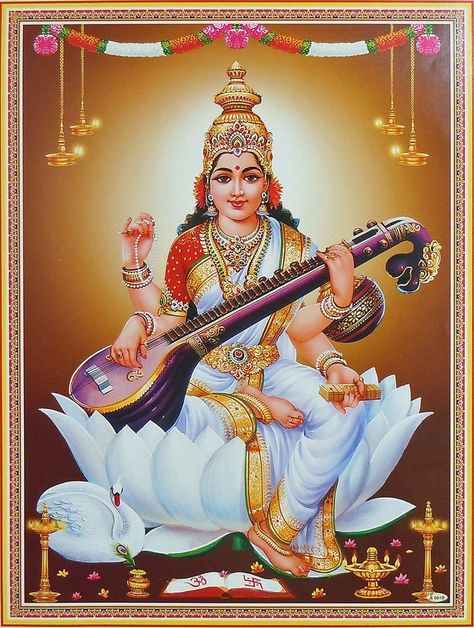
Swan and Peacock
Often flanking Saraswati, the peacock and swan stand for the duality of human nature. While the swan, with its ability to separate the pure from the impure, symbolizes the power of discrimination and the application of wisdom, the peacock, with its vivid plumage and pride, advises against the perils of vanity and ego.
The Veena
The veena, a stringed instrument used by Saraswati, symbolizes the harmonic unification of the intellect, body, and spirit. Playing the veena helps the seeker to bring their inner self into line with the cosmic rhythms of the universe, therefore promoting inner serenity and harmony.
Saraswati’s Multiple Roles
Influence of Goddess Saraswati goes much beyond the boundaries of scholarship and the arts. She is seen as a complex goddess, every feature of her divine nature fulfilling a different function in the life of her followers.
Saraswati is Lord Brahma’s spouse.
Within the Hindu mythology, Saraswati is mostly known as the companion of Lord Brahma, the universe’s creator. This marriage stands for the inseparable link between the caring, intellectual core of the divine feminine and the creative power of the divine masculine.
Saraswati: Mother of the Vedas
Often referred to as the “Mother of the Vedas,” the holy books upon which Hindu philosophy and spirituality are based constitute Saraswati. Her position as the ultimate source of divine wisdom and the means by which the knowledge of the universe is passed to mankind is highlighted by her function as the founder of these old books.

Saraswati as the Arts and Sciences’ patron
Celebrated as the patron of the arts, music, literature, and the sciences is goddess Saraswati. The basis of many old Indian literary and intellectual traditions, the Sanskrit language is thought to have been invented by her. Whether it’s music, poetry, or the quest of intellectual understanding, Saraswati’s blessings are sought by devotees typically looking for excellence in their particular disciplines.
The Significance of Saraswati Puja
On the Hindu calendar, Saraswati Puja—also known as Vasant Panchami—has great importance annually. Celebrated at the start of spring, this festival honors the goddess and calls for her blessings on intellectual and creative endeavors.
Practices and Gifts
Devotees of Saraswati Puja follow certain rites and offerings meant to satisfy the goddess. Before her idol, these include the arrangement of holy texts, writing tools, and musical instruments, so signifying the respect for knowledge and the arts. The use of yellow flowers, turmeric, and other lucky objects emphasizes even more the link of the celebration to the divine feminine.
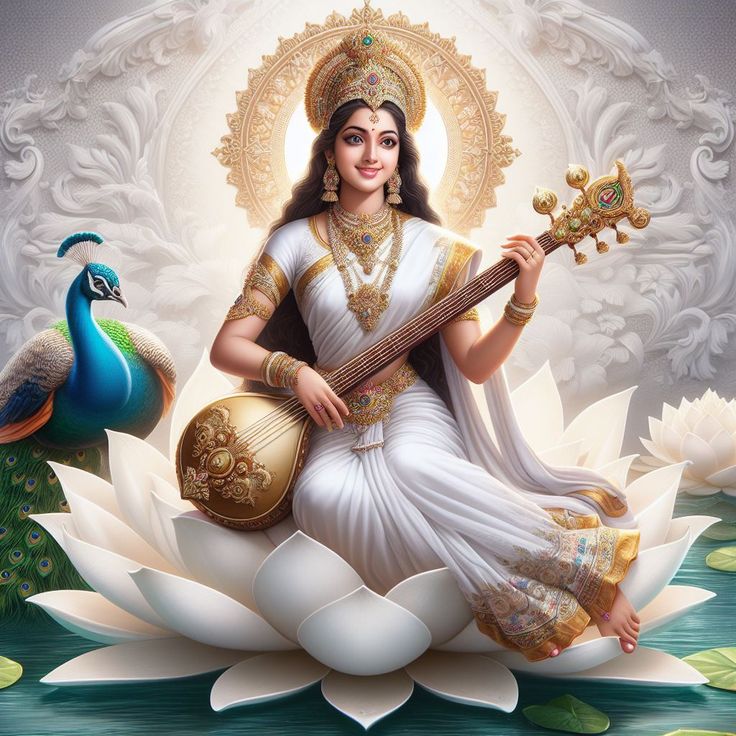
Blessings to Scholars and Students
Students and academics who seek the goddess’s graces for intellectual development and academic success find Saraswati Puja especially significant. Children are urged to start their official education on this day; many of them pray for the goddess’s direction in their studies and tests.
Boosting Harmony and Creativity
Beyond the boundaries of schooling, the celebration of Saraswati Puja helps to call the goddess’s blessings for the harmonic integration of the mind, body, and spirit as well as for creative activities. Seeking Saraswati’s guidance to improve their talents and inspire their creative expression, musicians, painters, and anyone engaged in intellectual interests may look to her.
Goddess Saraswati’s Respected Legacy: Enduring
The impact of Goddess Saraswati has gone beyond Hinduism to find respect in other spiritual traditions. She is honored in Buddhism and Jainism as a supporter of the arts and education, therefore emphasizing the global appeal of her divine essence.
Saraswati amid the Vedas and Puranas
The ancient Hindu writings, the Vedas and Puranas, abound in references to Goddess Saraswati, therefore stressing her several responsibilities and the respect paid to her by the sages and seers of the past. Rich tapestry of legendary stories found in these holy books highlights Saraswati’s great importance in the Hindu pantheon.
Saraswati in Modern Spiritual Activities
Hindu spiritual rituals still center on the veneration of Goddess Saraswati, even in the modern age. Devotees still ask her blessings for the accomplishment of inner peace and harmony as well as for intellectual and artistic interests. Saraswati’s ongoing legacy attests to the ageless significance of her divine essence in the life of her followers.
Conclusion
A lighthouse of wisdom, Goddess Saraswati leads humanity on its never-ending search for artistic expression, knowledge, and insight. Her numerous roles and symbolic images have created a complex tapestry of spiritual and cultural relevance that speaks across generations and beyond religious divides. Honoring and loving Saraswati not only honors the divine feminine but also helps us to empower ourselves to welcome the transforming power of knowledge, creativity, and harmonic harmony of the mind, body, and spirit.
#saraswati #saraswatideity #pujasaraswati #devi #puja

